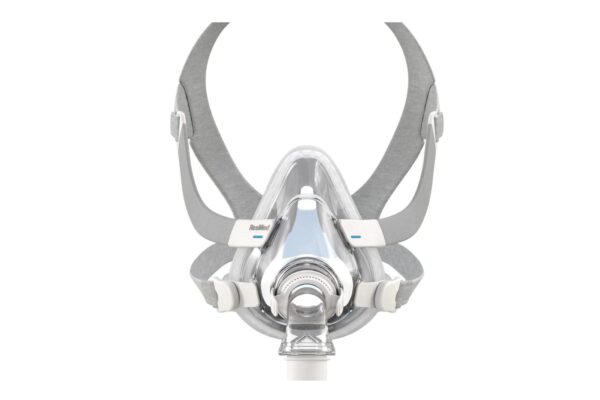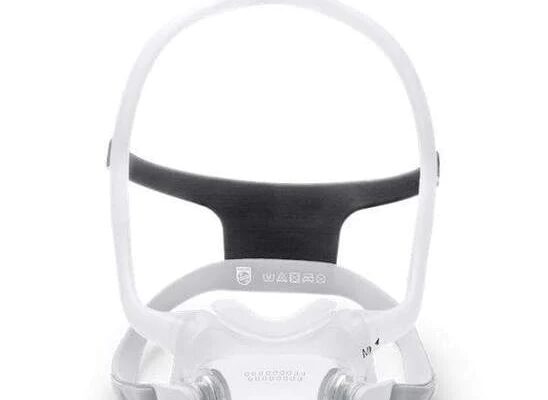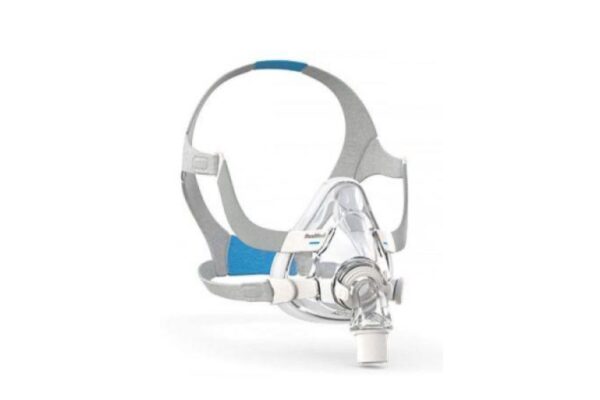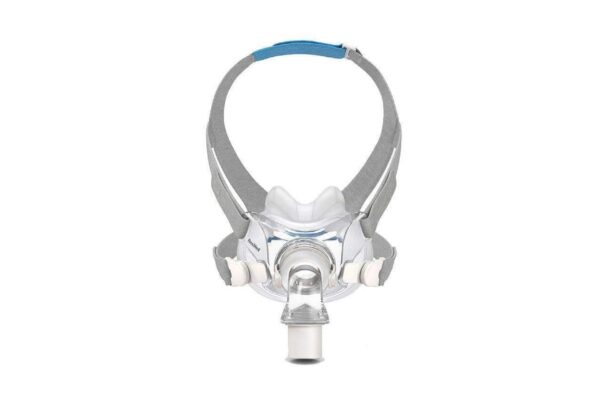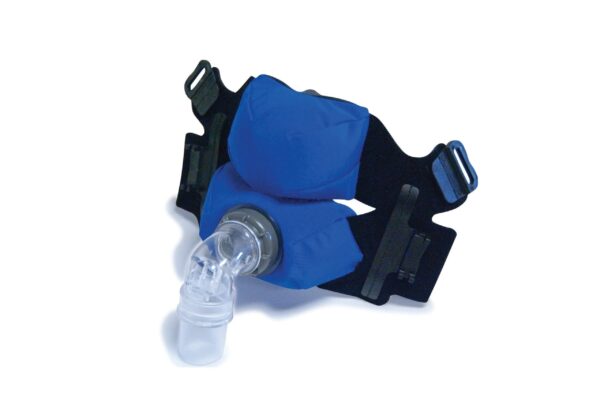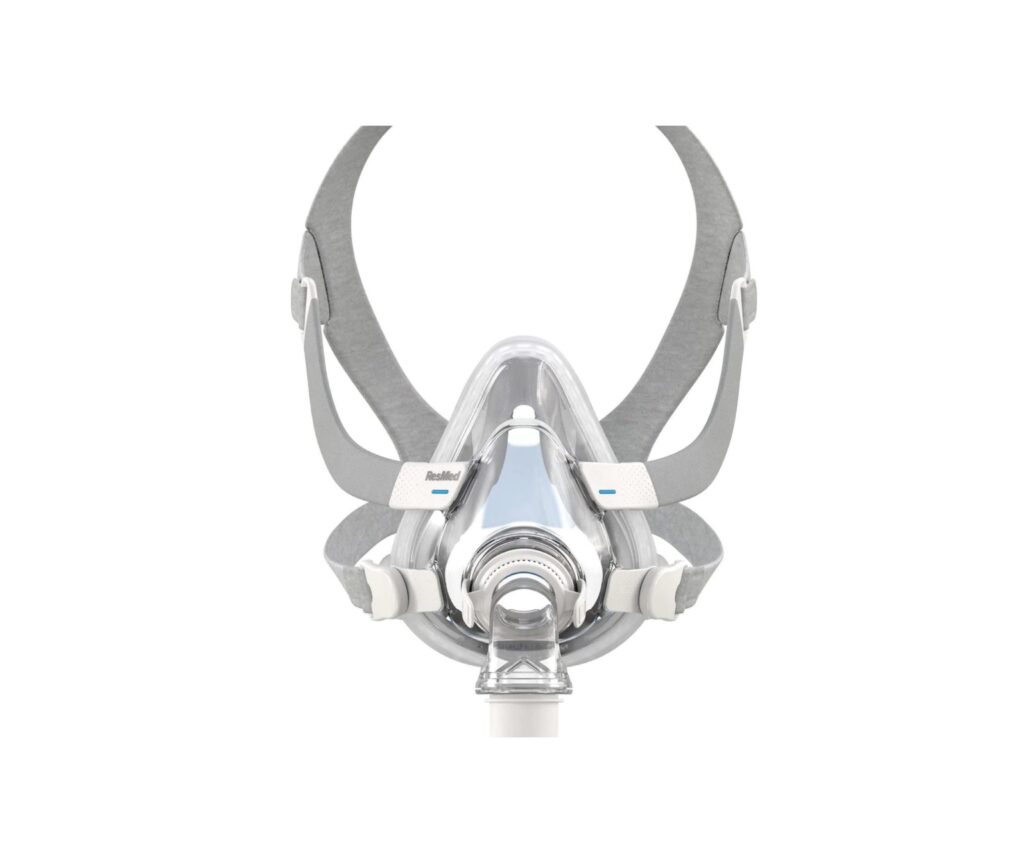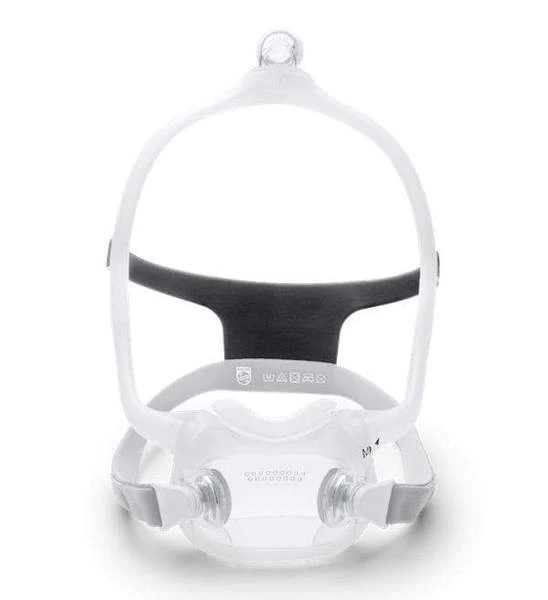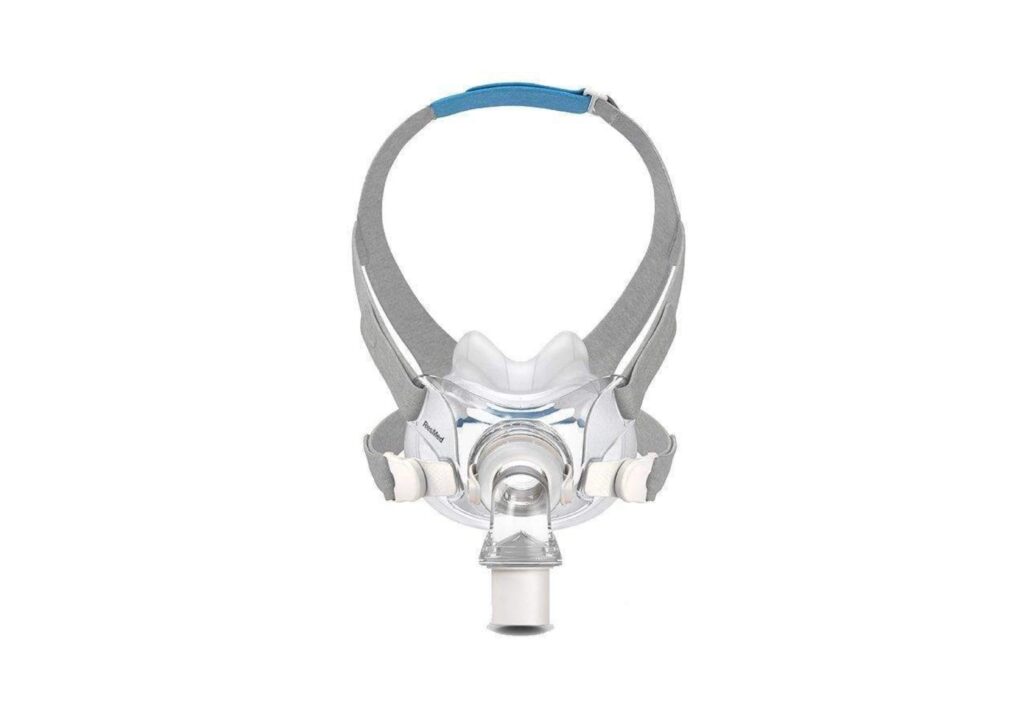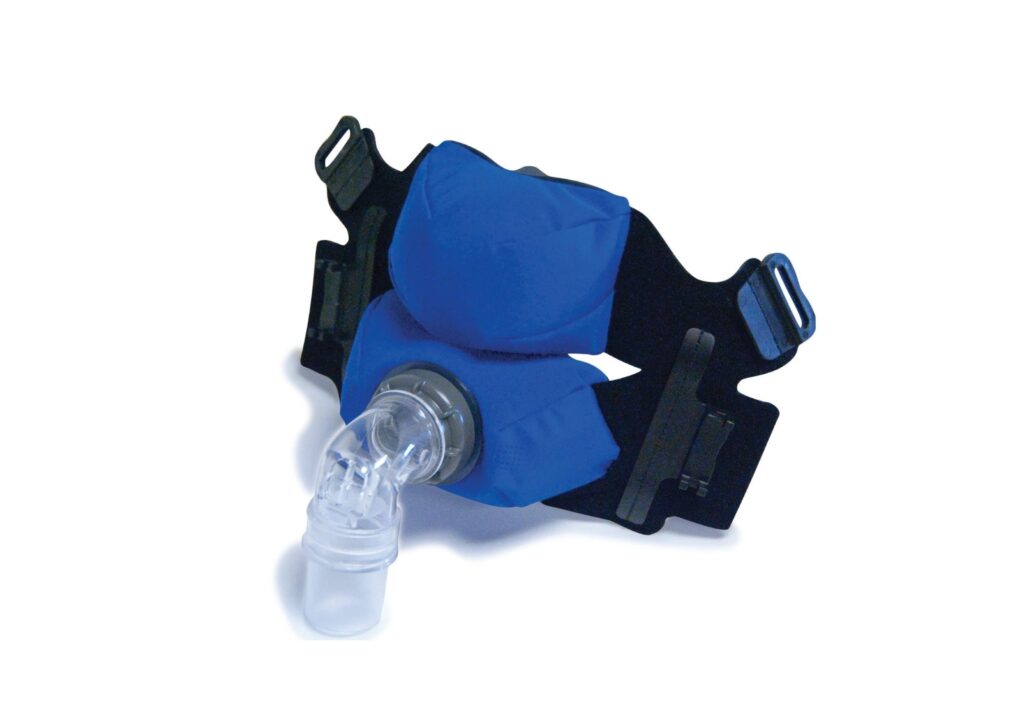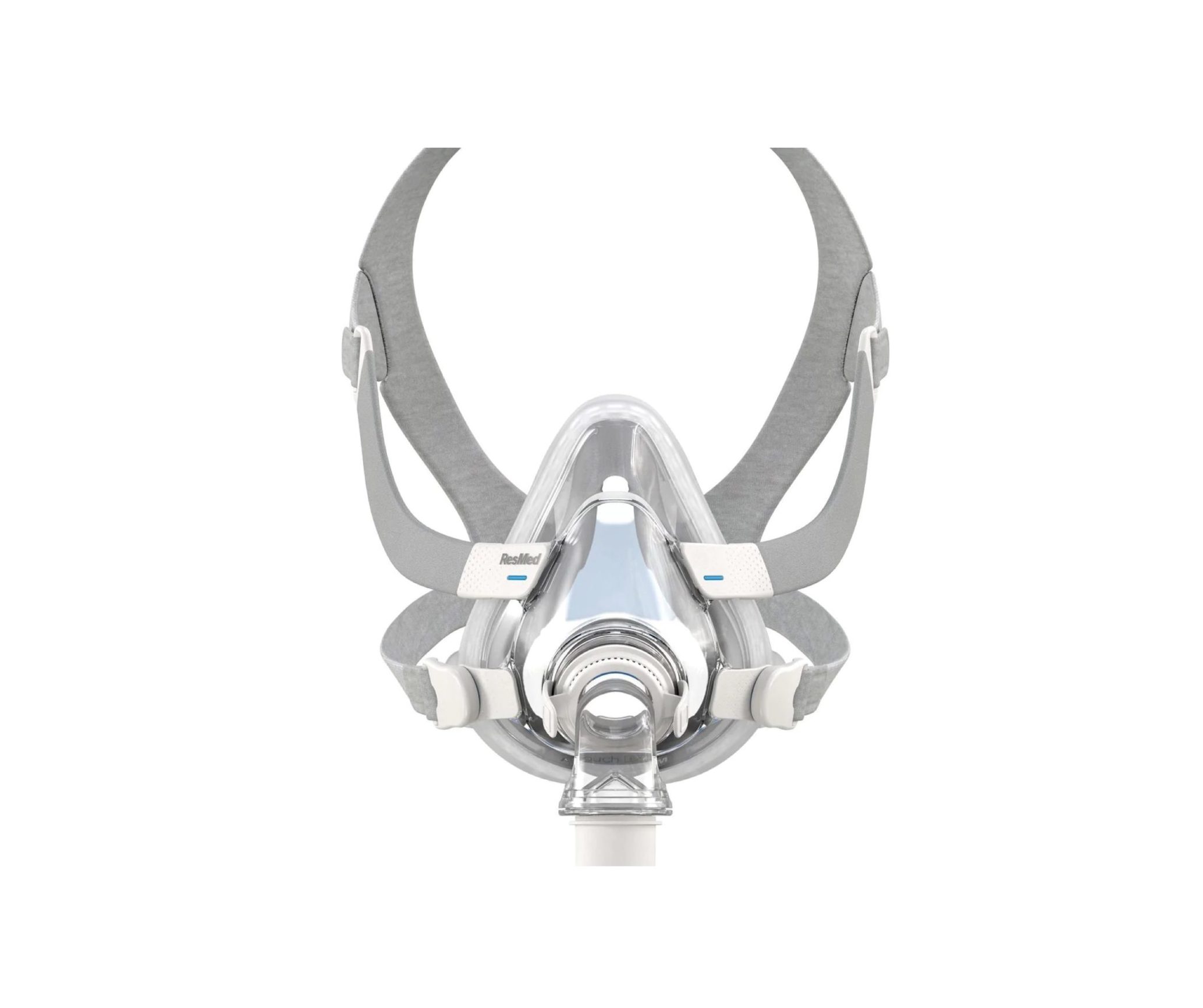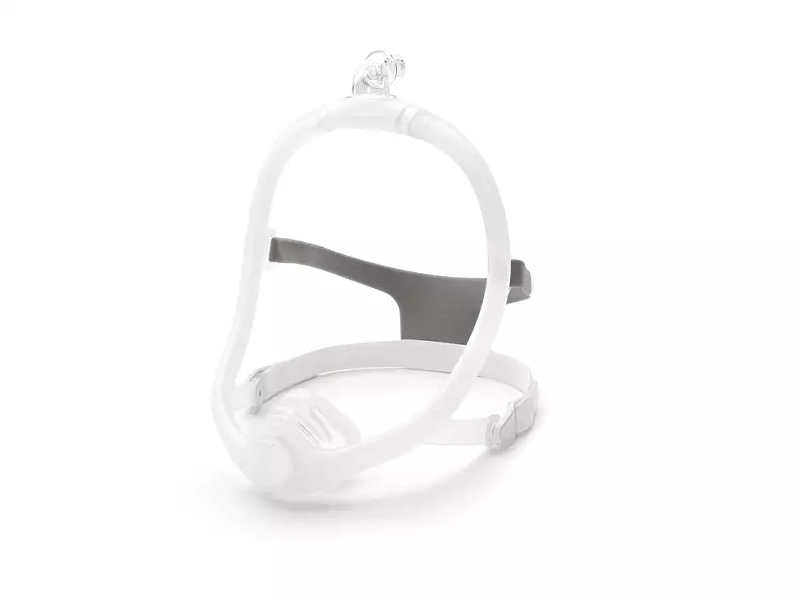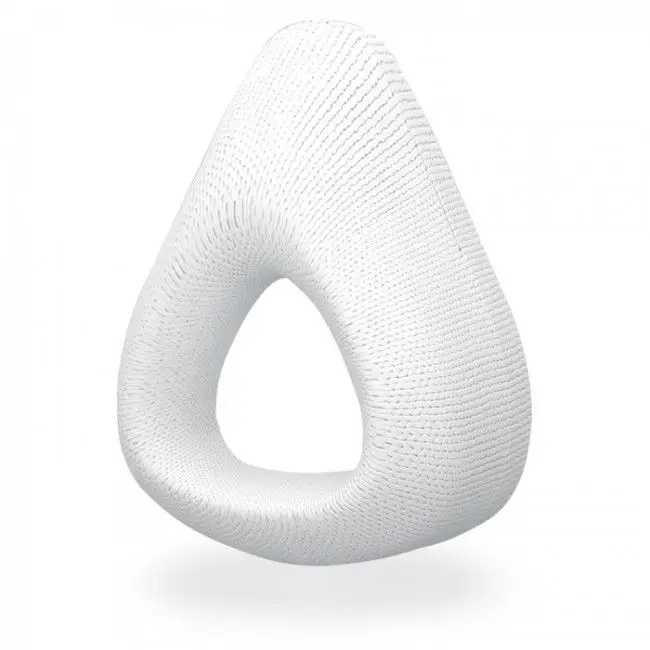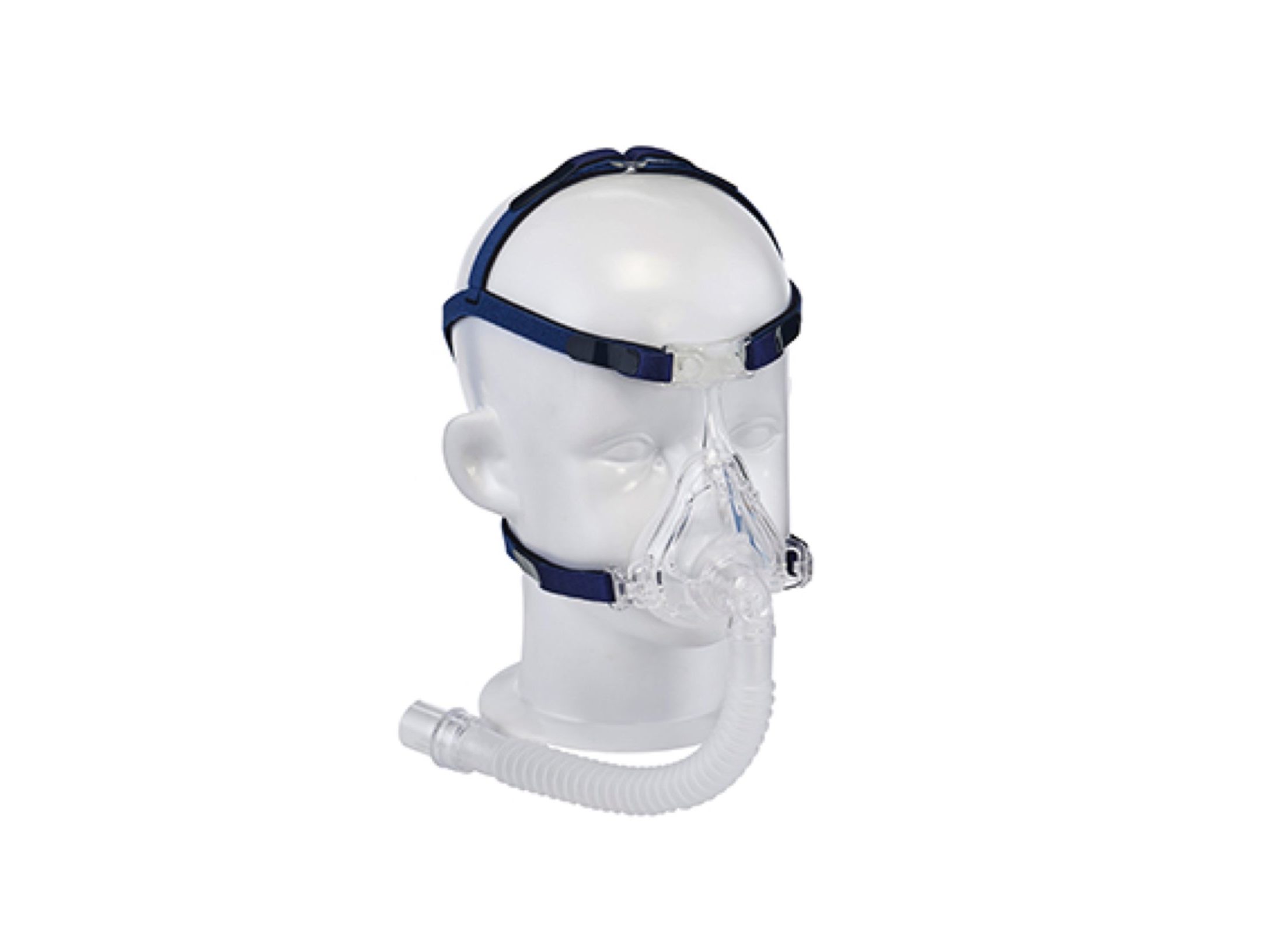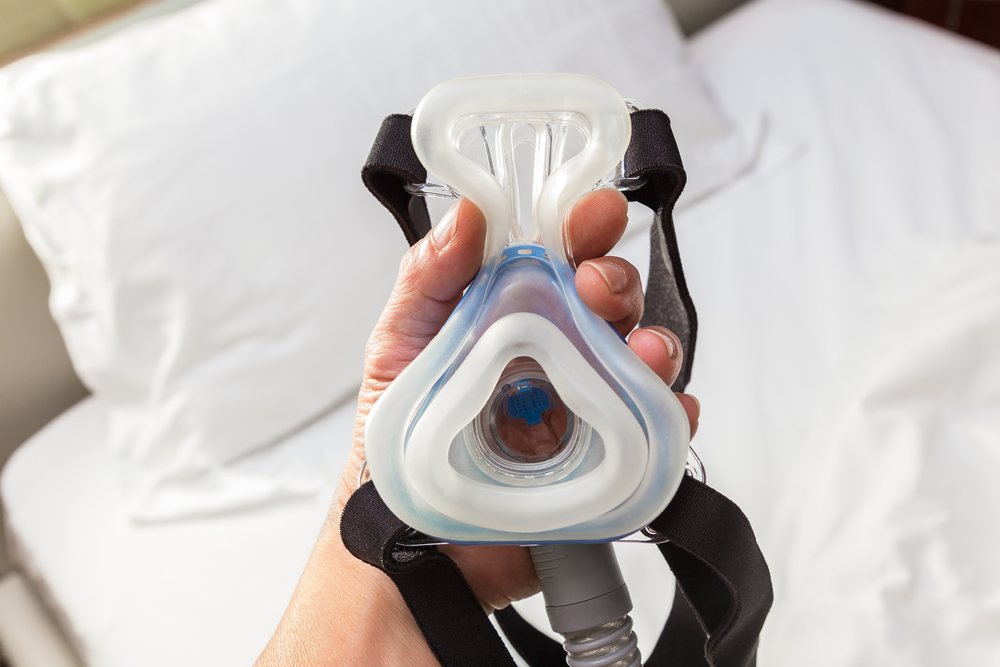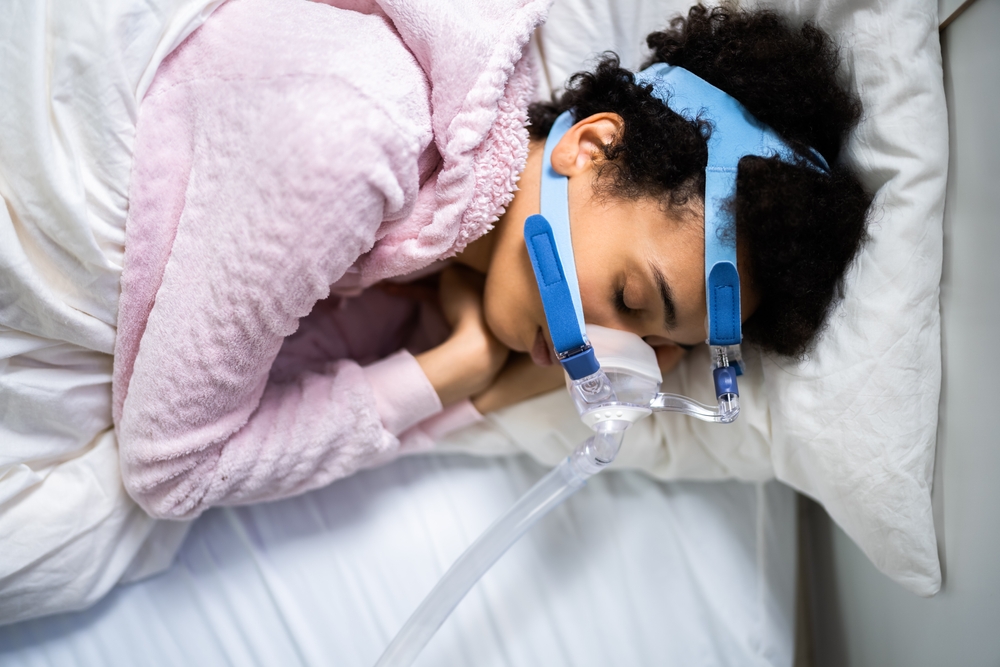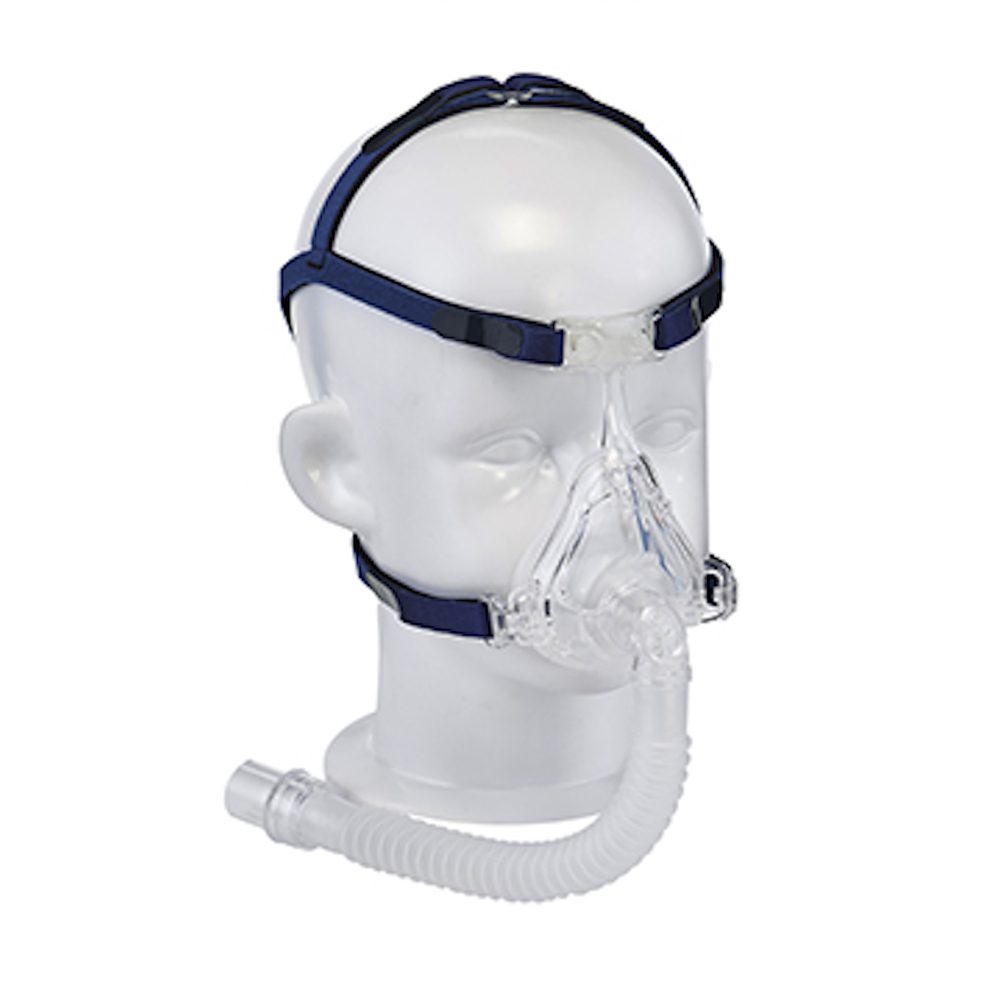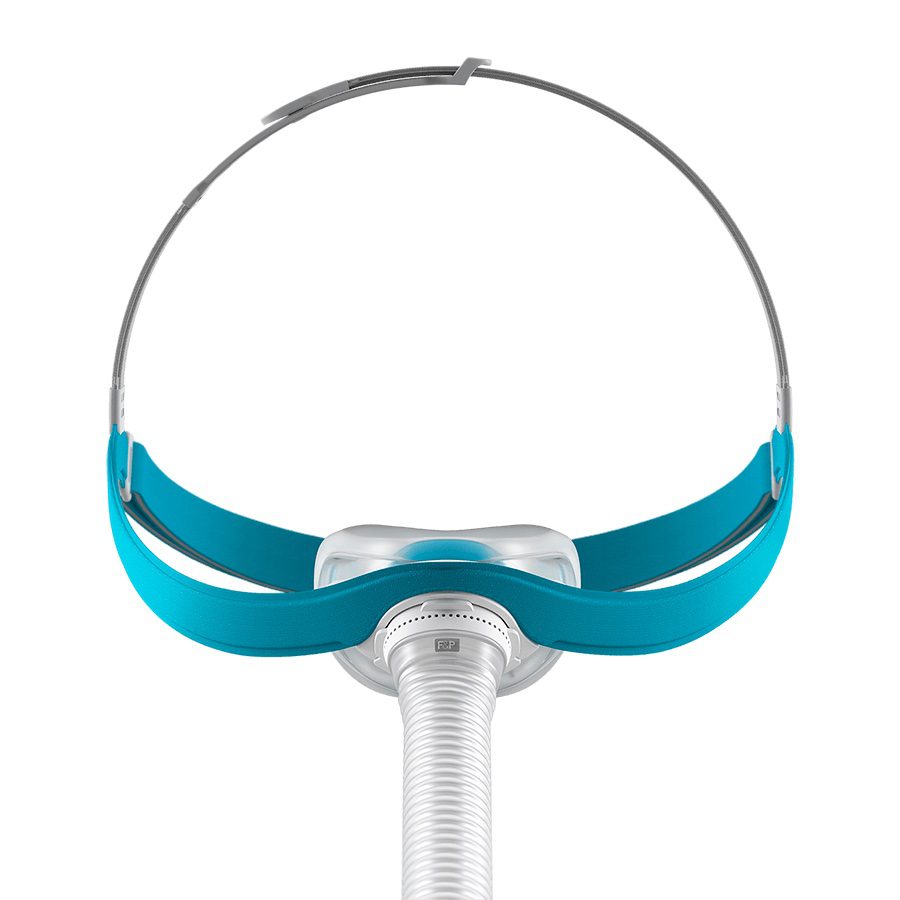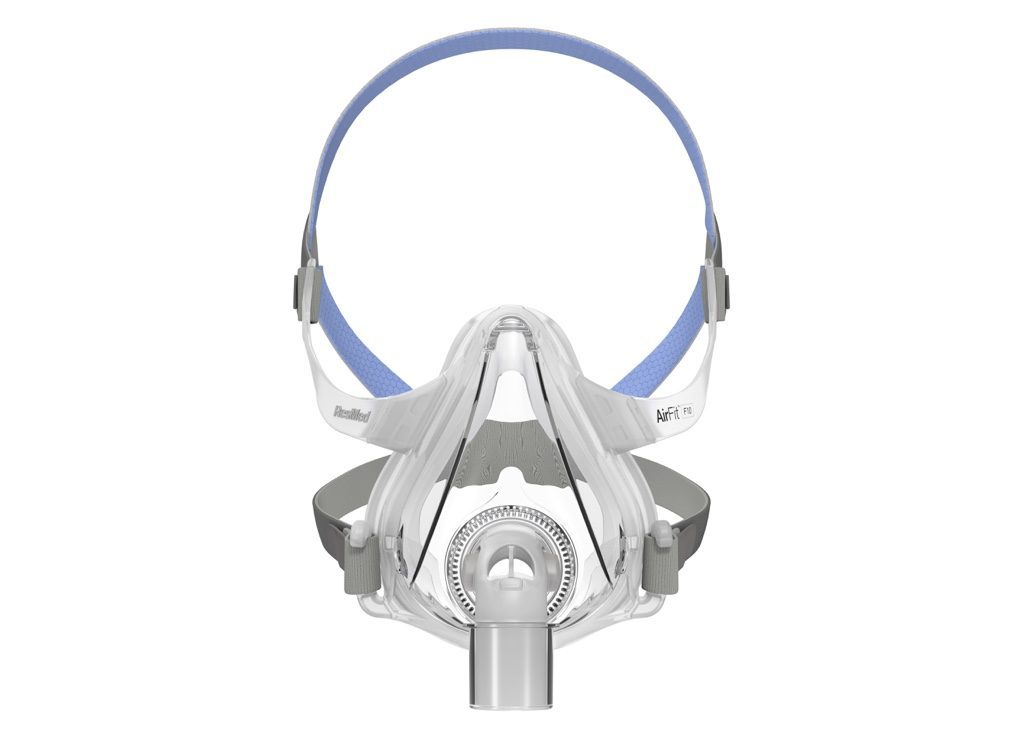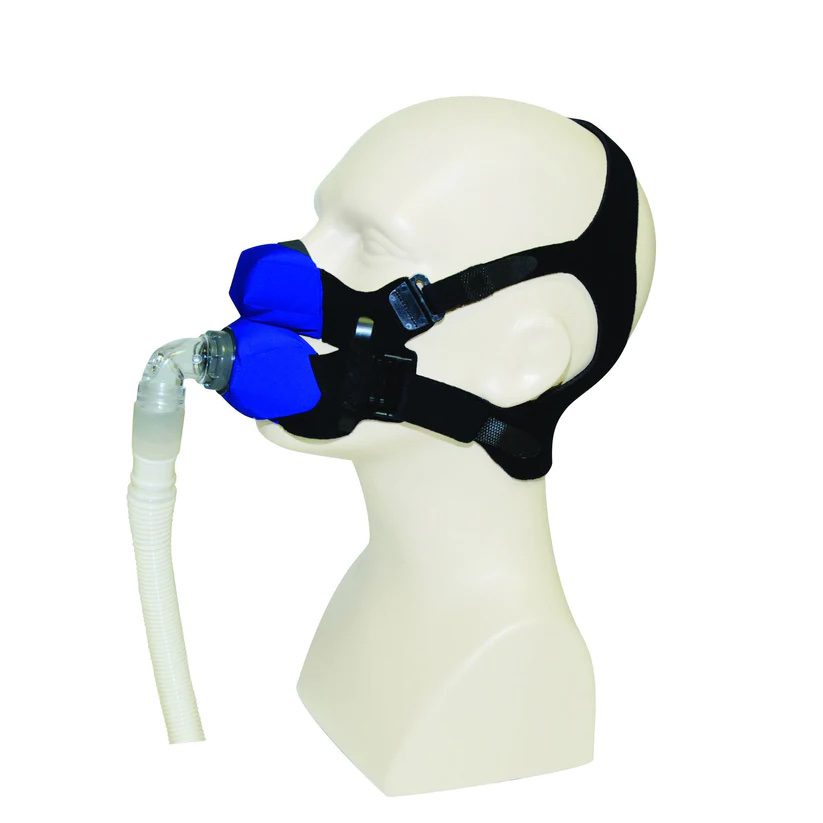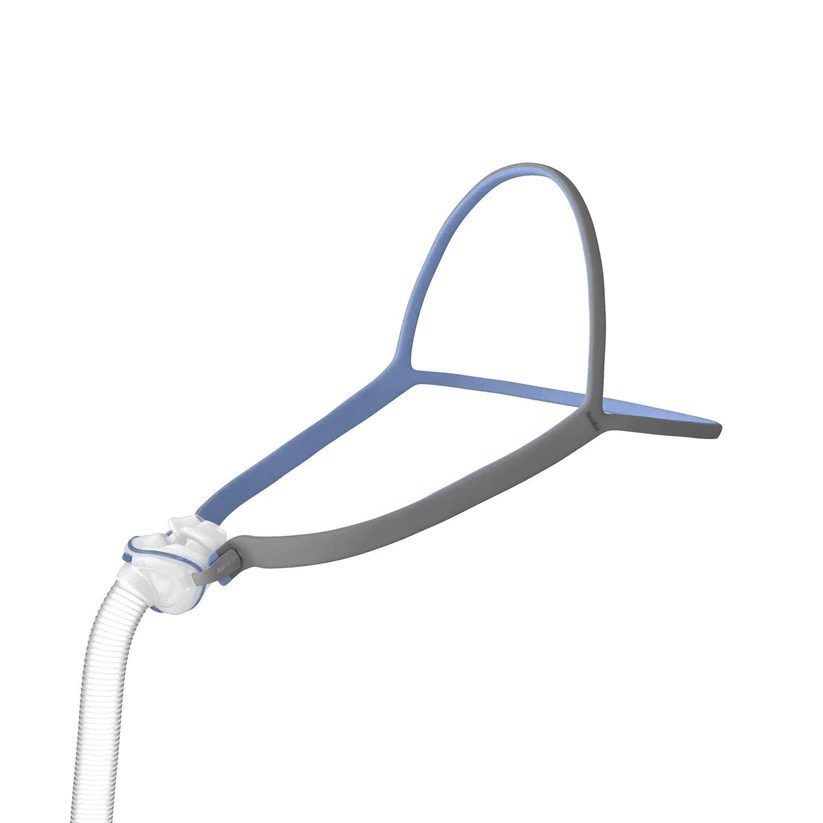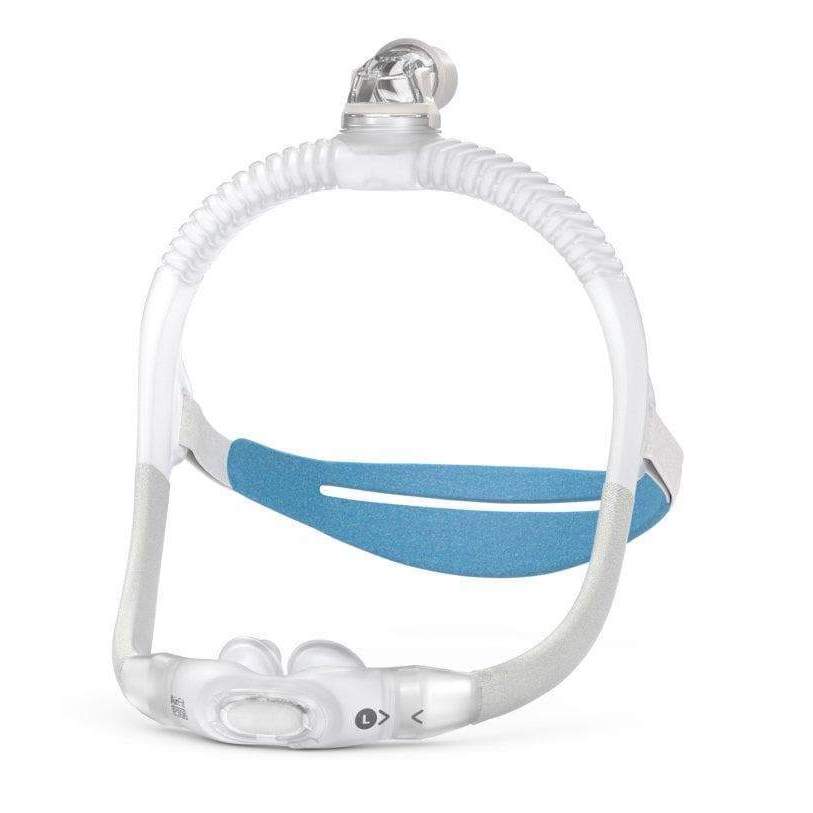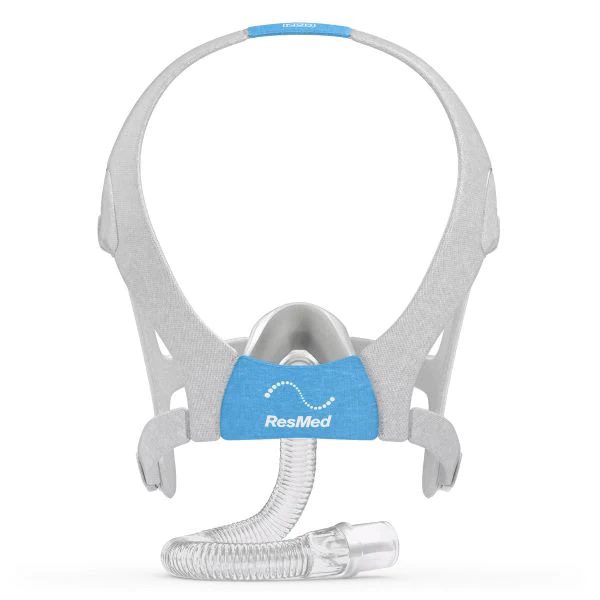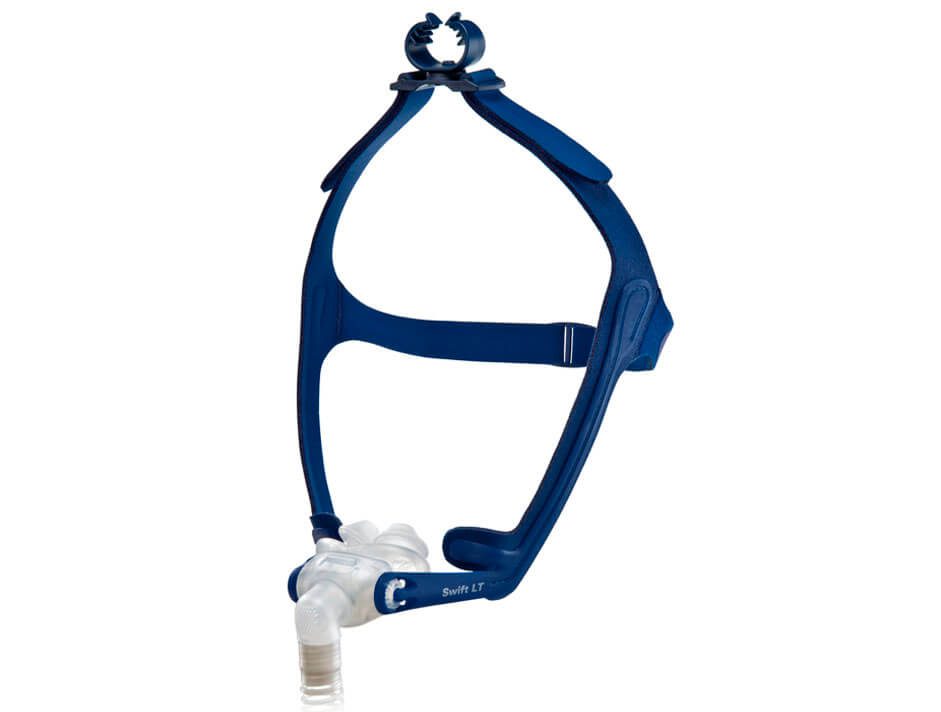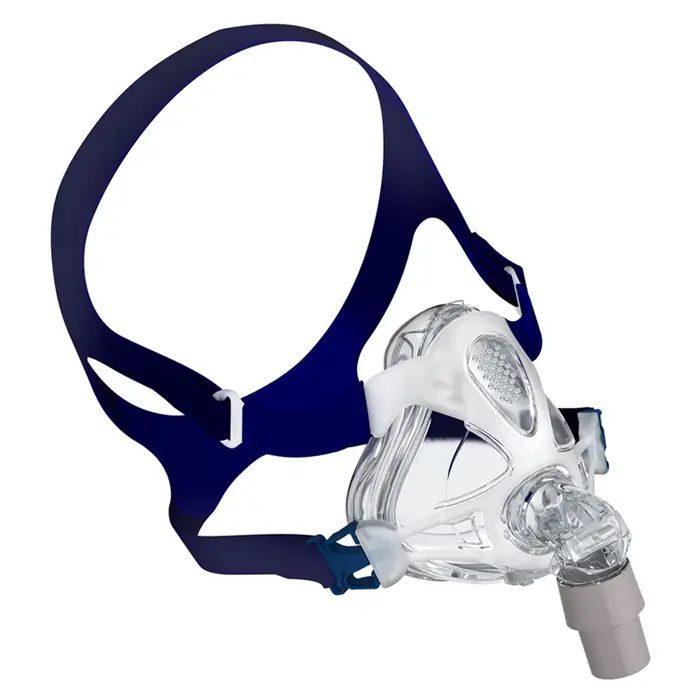Continuous positive airway pressure (CPAP) therapy is a highly effective treatment for obstructive sleep apnea (OSA), but people who breathe through their mouth often struggle to find an appropriate CPAP mask.
When someone using a nasal CPAP mask breathes through their mouth, the pressurized air escapes and can no longer do its job of keeping their airway open. Mouth breathing may also lead to symptoms such as dry mouth, even when using the CPAP machine’s humidification feature.
Choosing the right full-face CPAP mask can help ensure that people who breathe through their mouth benefit from their CPAP therapy. Since no CPAP mask is right for everybody, we’ll walk you through a range of the best full-face CPAP masks available before explaining how to find a CPAP mask that suits your unique needs.
Best Overall
ResMed AirTouch F20 Full Face CPAP Mask with Headgear
Ideal For
- Customers interested in an ultra-comfortable cushion
- People who read or watch television before bed
- CPAP users with sensitive skin
Who should keep looking
- Customers who want a long-lasting cushion
- People who sleep hot
- CPAP users with facial hair
-
Price
$154
-
Size
Small for Her, Small, Medium, Large
-
Type
Full Face
ResMed’s AirTouch F20 full-face CPAP mask combines a memory foam cushion with the same adaptable magnetic headgear used in the company’s popular AirFit line. With three sizes of cushion and a For Her headgear model, the AirTouch F20 is also one of the most versatile full-face mask options on the market.
The AirTouch F20’s mask cushion is made from memory foam coated in soft cotton. Since memory foam adapts to the contours of the user’s face, the cushion offers a tight seal without leaving red marks or indentations. The cotton coating also helps prevent friction that can irritate sensitive skin.
Memory foam is more permeable than silicone, allowing for more natural breathing while still maintaining the correct air pressure level.
People who breathe through their mouth while asleep often move their jaw as well, making the AirTouch F20’s tight seal a useful innovation. However, the memory foam cushion does need to be replaced every month to prevent bacteria growth and foam degradation. It’s also important to note that memory foam has a tendency to trap heat, which may cause discomfort.
The majority of reviewers report that they are very happy with the AirTouch F20, although some users with facial hair found that the headgear can cause pinching or pulling. ResMed offers a 90-day warranty for the AirTouch F20 frame and a seven-day warranty for the cushion.
Disclaimer: In November 2023, ResMed issued a safety notice cautioning that the magnetic clips on this model and other ResMed masks should be kept at least 6 inches away from any implanted medical device that may be affected by magnets, including pacemakers and insulin pumps. The company also warns that other metallic implants such as valves, stents, and certain dental implants may be impacted by the magnetic clips.
Use this SleepApnea.org link for the most current discount on ResMed products
Shop NowBest for New CPAP Users
Philips Respironics DreamWear Full Face CPAP Mask Fit-pack
Ideal For
- Customers who want to experiment with cushion size
- People who feel claustrophobic in traditional headgear
- CPAP users who wear glasses
Who should keep looking
- Customers who prefer a traditional headgear design
- CPAP users who wear a head covering or bonnet at night
- People with sensitive or fragile skin
-
Price
$169
The Philips Respironics DreamWear Full Face CPAP mask features a design that relocates the air tube to the top of the head for more freedom of movement. The fit-pack option provides all four cushion sizes — small, medium, medium-wide, and large — to help first-time users find their correct fit.
Most full-face CPAP masks connect the air tube to the mask itself. By relocating the air tube connection to the top of the head and routing tubing through the headgear, the DreamWear Full Face mask opens up the user’s range of vision and helps reduce feelings of claustrophobia. The connection also swivels in alignment with the user’s neck, providing a natural range of motion.
Instead of covering the nose like most full-face masks, the DreamWear’s silicone cushion fits against the user’s nostrils like a nasal pillow CPAP mask. This design choice further reduces claustrophobic feelings while preventing soreness and irritation along the bridge of the nose.
Most users report that they appreciate the DreamWear’s relocated air tube and lower mask profile. The most common complaint is that the mask design requires tighter headgear that can lead to red marks or skin irritation for some users.
Philips Respironics backs the DreamWear Full Face CPAP mask with a 90-day warranty.
Use this SleepApnea.org link for the most current discount on Philips Respironics products
Shop NowBest for Women
ResMed AirFit F20 for Her Full Face CPAP Mask
Ideal For
- People with small or narrow facial features
- CPAP users who struggle to find a standard CPAP mask that seals appropriately
- Customers looking for an easy-to-use headgear design
Who should keep looking
- People with broad facial features or a wide jaw
- Customers with facial hair
- Active sleepers
-
Price
$155
-
Size
Small, Medium
-
Type
Full-Face
Standard CPAP masks do not always fit well on women or people assigned female at birth, who tend to have smaller and narrower faces and jaws. The AirFit F20 For Her is designed to accommodate these differences, providing an appropriately tight full-face seal for those who breathe through their mouth at night. Users can choose between small, medium, and large silicone cushion sizes to ensure that their mask fits correctly.
Like the standard AirFit F20, the AirFit F20 For Her includes magnetic headgear that is designed to be simple to adjust, put on, and take off. In addition to making it easier to get a good seal, this feature is popular among reviewers who get up multiple times during the night.
Another popular feature of the AirFit F20 line is that it lacks a forehead strap. While the bridge of the mask itself still enters the user’s field of vision, the AirFit F20 For Her may feel less claustrophobic for some users.
The AirFit F20 For Her is very well-reviewed, with many users reporting that it is the first full-face CPAP mask they’ve used that is both effective and comfortable. However, some reviews do note that people who roll around or change positions regularly may need to readjust the headgear throughout the night.
The AitFit F20 For Her, including the silicone cushion, has a 90-day warranty from ResMed.
Disclaimer: In November 2023, ResMed issued a safety notice cautioning that the magnetic clips on this model and other ResMed masks should be kept at least 6 inches away from any implanted medical device that may be affected by magnets, including pacemakers and insulin pumps. The company also warns that other metallic implants such as valves, stents, and certain dental implants may be impacted by the magnetic clips.
Use this SleepApnea.org link for the most current discount on ResMed products
Shop NowBest for Glasses-Wearers
ResMed AirFit F30 Full Face CPAP Mask
Ideal For
- Active sleepers
- CPAP users who read or watch television before bed
- People who experience claustrophobia with full-face masks
Who should keep looking
- Shoppers on a tight budget
- CPAP users concerned about red marks
- People with large facial features
-
Price
$170
-
Size
Small, Medium
-
Type
Full-Face
As part of the next generation of the AirFit line, the ResMed AirFit F30 builds on the AirFit F20’s features with an under-the-nose mask and a streamlined headgear design. The headgear is designed to be easily adjustable and one-size-fits-all, while the silicone mask cushion is available in small and medium sizes.
Thanks to the nasal pillow-style full-face mask and the lack of a headband, the AirFit F30 does not interfere with wearing glasses and allows for a full range of vision. People who find most full-face masks claustrophobic are likely to also appreciate the AirFit F30’s compact design.
People who breathe through their mouth while sleeping sometimes find that they open their mouth wide enough to break the seal during the night. Reviewers report that the AirFit F30’s strap design prevents this by discouraging jaw movement without causing discomfort.
While most reviews of the AirFit F30 are highly positive, some users do report that they develop red marks around the silicone cushion. People with wide faces or large facial features may also find that the available cushion sizes are not appropriate for their needs.
ResMed provides a 90-day warranty for the AirFit F30.
Disclaimer: In November 2023, ResMed issued a safety notice cautioning that the magnetic clips on this model and other ResMed masks should be kept at least 6 inches away from any implanted medical device that may be affected by magnets, including pacemakers and insulin pumps. The company also warns that other metallic implants such as valves, stents, and certain dental implants may be impacted by the magnetic clips.
Use this SleepApnea.org link for the most current discount on ResMed products
Shop NowBest Value
Circadiance SleepWeaver Anew Full Face CPAP Mask
Ideal For
- People who experience claustrophobia with standard masks
- Frequent travelers
- CPAP users who want to try an innovative mask design
Who should keep looking
- Those who wake easily
- People with sensitive or fragile skin
- CPAP users who require high air pressure levels
-
Price
$84
-
Size
Regular, Large
-
Type
Full-Face
The Circadiance SleepWeaver Anew Full Face CPAP Mask does not have a traditional mask or cushion — instead, the mask uses polyester-blend fabric to deliver pressurized air and create a seal against the user’s face. The SleepWeaver Anew is available in small, regular, and large sizes.
Most CPAP masks share similar design features, so the SleepWeaver Anew’s unique design may appeal to CPAP users who have tried several traditional models without success. Users who experience claustrophobia may also find that the fabric mask feels less confining than a standard full-face mask.
Reviewers who travel frequently report that since the SleepWeaver Anew has no hard or inflexible components, it is easy to fold up in a carry-on bag.
The soft fabric used for the sealing portion helps eliminate red marks in the morning. However, some users do report skin irritation from the stiffer fabric shell. Other common complaints are that the mask is noisier than a standard mask and develops leaks when used at high air pressure levels.
Circadiance markets the SleepWeaver Anew as being hypoallergenic, and the mask can be rinsed in water with a drop of dish soap or run through the washing machine.
The SleepWeaver Anew has a 90-day warranty from Circadiance.
Use this SleepApnea.org link for the most current discount on Circadiance products
Shop NowWhy We Picked These
Our team chooses our featured products based on in-depth research, a synthesis of reviews from people who use the products, and knowledge gained from years of experience in the sleep apnea field.
By explaining these products and contextualizing their performance, we hope to offer our readers a deeper understanding of their own needs and which CPAP masks might work best for them.
What to Consider When Choosing a CPAP Mask if You Breathe From Your Mouth
People who breathe through their mouth often find it difficult to choose a CPAP mask that suits their needs, since many of the most popular CPAP masks are intended for nasal breathers. Understanding what to look for in a mask can make it easier to find one that works for you.
CPAP Mask Considerations
| Price | As CPAP masks are a medical device, it’s critical to choose the best mask for your needs rather than the least expensive option. When considering the cost of a mask, it’s also worth looking into the cost of replacement mask cushions and how often they require replacing. |
| Size & Fit | Choosing the right size and fit plays an important role in how well the mask works and how comfortable it is. Users should follow sizing instructions closely and size themselves for each mask they try, as sizing instructions can differ among brands or even models. |
| Chinstrap | Some CPAP users who breathe through their mouth use a chinstrap to keep their mouth closed while asleep. This accessory works very well for some people, while others find a full-face mask more effective or comfortable. |
| Sleep Position | Full-face masks can sometimes make side or stomach sleeping difficult. However, choosing a low-profile mask and using a CPAP pillow can make these positions more comfortable. It’s also worth noting that some positions, such as back sleeping, can also worsen OSA or encourage mouth breathing. |
| CPAP Pillow | CPAP pillows are designed to provide space for the user’s CPAP mask, which is an important consideration for full-face mask users who sleep on their side or stomach. Stabilizing CPAP pillows can also help those who breathe through their mouth while sleeping on their back. |
| Compatibility | Some masks are not compatible with very high air pressure levels, but nearly all CPAP machines are compatible with all CPAP masks. If your CPAP machine requires a specific type or brand of mask, this information will be listed in the documentation and on the manufacturer’s website. |
| Comfort | Comfort is intensely personal, so you should consider what you personally find comfortable before choosing a CPAP mask. However, padded headgear, memory foam mask cushions, and easily adjustable headgear are all features that many people find comfortable. |
| Quality Materials | Most CPAP masks use a similar range of materials, such as silicone mask cushions and synthetic fabric headgear. However, other options are available depending on the manufacturer. CPAP masks made with high-quality materials often have a longer lifespan than less expensive options. |
CPAP Mask Types for Mouth Breathing
There are three major types of CPAP face masks: full-face masks, nasal masks, and nasal pillow masks.
Full-face masks are usually the most appropriate choice for people who breathe through their mouth while sleeping, though some people may be able to use a nasal or nasal pillow mask when combined with an accessory such as a chinstrap.
CPAP Mask Types
Full-Face Mask
Full-face masks direct pressurized air through both the nostrils and the mouth, making them the best choice for most people who breathe through their mouth. Most full-face masks start at the bridge of the nose and end below the mouth, though some models start below the nose or have separate chambers for the nose and mouth.
| Benefits: | You Shouldn’t Use One If: |
|---|---|
|
|
Nasal Mask
Nasal masks deliver pressurized air through the sinuses and often look like a scaled-down version of a full-face mask. They usually start at the bridge of the user’s nose and end above their upper lip, though the mask shape may vary among manufacturers.
| Benefits: | You Shouldn’t Use One If: |
|---|---|
|
|
Nasal Pillow Mask
Nasal pillows are extremely lightweight and compact, lacking the hard shell of most full-face or nasal CPAP masks. Instead, the pillow rests above the upper lip and inflates to create a seal against the nostrils.
| Benefits: | You Shouldn’t Use One If: |
|---|---|
|
|
Do You Need a Prescription for a CPAP Mask?
Like CPAP machines, CPAP masks require a prescription from a medical professional. Individual parts for the CPAP mask, such as replacement cushions or pillows, do not require a prescription and may be available from non-specialist retailers.
Will Health Insurance or Medicare Cover the Cost of Your CPAP Mask?
Medicare and some health insurance providers may cover the cost of necessary CPAP equipment such as masks, but it’s important to double-check your provider’s policies before assuming this to be the case.
In order to qualify for Medicare CPAP coverage, a person must be diagnosed with OSA (with a supporting sleep study) and complete a 13-week CPAP trial. Those whose CPAP therapy is covered by Medicare may be reimbursed for purchasing and replacing CPAP masks and other supplies on a regular schedule.
Private health insurance providers vary in their coverage of CPAP therapy. Many, though not all, cover the cost of CPAP masks if a person’s CPAP therapy is otherwise covered.
Where Can You Buy a CPAP Mask for Mouth Breathing?
CPAP masks, including full-face CPAP masks, can be purchased from a sleep specialist, brick-and-mortar CPAP stores, and online CPAP retailers. Online retailers require customers to upload or fax their prescription before making a purchase.
| Retailer | Pros | Cons |
|---|---|---|
| Sleep specialist |
|
|
| Brick-and-mortar store |
|
|
| Online retailer |
|
|
CPAP Masks for Mouth Breathing
Most CPAP users should wash their CPAP mask on a daily basis, as well as washing the headgear weekly. Different CPAP masks have different cleaning requirements, but most can be hand-washed and rinsed using clean water and a gentle detergent. Some CPAP headgear can be cleaned in the washing machine on a gentle cycle.
People who breathe through their mouth while asleep can wear a CPAP mask and use a CPAP machine, though this habit does make choosing the right mask even more important. Full-face masks are usually the best choice for these users, since this design prevents pressurized air from escaping through the mouth.
Nasal CPAP masks are not usually the right choice for most people who breathe through their mouth at night. When someone wearing a nasal or nasal pillow mask breathes through their mouth, the pressurized air leaks out and reduces the treatment’s efficacy. However, some people are able to use a nasal CPAP along with a chinstrap that keeps their jaw closed.
People who are unable to train themselves to breathe through their nose while asleep can use a full-face CPAP mask or use a chinstrap to keep their jaw closed during the night. Chinstraps attach to the CPAP mask headgear and rest beneath the jaw to keep it closed and reduce mouth breathing.


